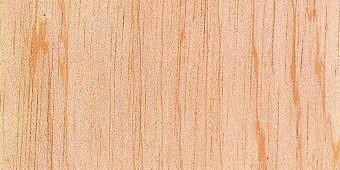Penarahan: Malaysian Wood Overview
INTRODUCTION
Penarahan is the standard Malaysian name for wood derived from the Myristicaceae family. It is known by several local names across Malaysia, including darah-darah (Sabah), darah-darah kerantu (Sabah), dara kerbau (Kelantan), kumpang (Sarawak), lempoyang paya (Sabah), lunau (Sabah), mendarah (Peninsular Malaysia), pala (Kedah), and penarahan arang (Peninsular Malaysia).
Key species contributing to the Penarahan wood include Gymnacranthera bancana, G. contracta, G. farquhariana var. eugeniifolia, G. forbesii, Horsfieldia grandis, H. irya, H. polyspherula, H. punctatifolia, H. irya, H. sucosa, H. superba, Knema conferta, K. furfuracea, K. hookeriana, K. laurina, Myristica cinnamomea, M. elliptica, M. gigantea, M. iners, M. lowiana, and M. maingayi.
The sapwood is typically lighter in color and blends poorly with the heartwood, which is light yellow-brown with occasional pink tinge and dark red-purple stripes. In some species, a blood-red core is also visible.
Penarahan wood is known by various names internationally, including Penarahan (Brunei), Kaundamu and Mavota (Fiji), Jathikai (India), Bedarah, Biawak, Dadara, Darah, Darah-darah, Hondala, Kala, Kumpang, Mandara, Mariak, Mendarahan, Mendarahan kera, Morolarie, Naoe boeloe, Padaki molaba, Pala burung, Para, Pendarah, Perdah, Salak, Saoenkorea manggone, Siamang, Sindai, Talimakas, Ubal dagal, and Ukut (Indonesia), Mutwinda (Myanmar), Horsfieldia and Nutmeg (Papua New Guinea), and Ananiog, Anuping, Duguan, Dunguan, and Tambalau (Philippines).
DENSITY
Penarahan wood is classified as Light Hardwood with a density range of 370-770 kg/m³ when air-dried.
NATURAL DURABILITY
Penarahan wood, particularly M. gigantea, was tested for its natural durability using the standard graveyard test. The wood lasted an average of 1 year under test conditions. As such, Penarahan wood is classified as non-durable. When in contact with the ground or exposed to the weather, it deteriorates quickly. It is highly susceptible to subterranean termites and fungal decay, as well as powder-post beetle and dry wood termite attacks when used indoors.
PRESERVATIVE TREATMENT
Penarahan wood is amenable to preservative treatment, enhancing its durability for various applications.
TEXTURE
Penarahan wood has a texture that ranges from fine to slightly coarse, with a generally even grain pattern. The straight grain contributes to its smooth finish.
STRENGTH PROPERTIES
Penarahan wood falls under Strength Group C (Engku, 1988) or SG 5 (MS 544: Part 2:2001). It provides a reliable material for various uses requiring moderate strength.
MACHINING PROPERTIES
Penarahan wood is relatively easy to saw and work with. Planing results in a moderately smooth to smooth surface, making it suitable for fine woodworking. Additionally, it performs well in boring, turning, and other machining tasks.
NAILING PROPERTY
Penarahan wood is rated as good for nailing, making it suitable for construction and carpentry projects.
AIR DRYING
Penarahan wood seasons at a moderate pace, with minor defects such as cupping, bowing, end-checking, splitting, and occasional insect attacks. For instance, 13 mm thick boards take approximately 3 months to air dry, while 38 mm thick boards take around 4 months.
SHRINKAGE
Penarahan wood experiences moderate shrinkage, with radial shrinkage averaging 2.2% and tangential shrinkage averaging 3.2%.
DEFECTS
The logs of Penarahan wood are generally free of defects, except for a small area around the pith where heart-rot and compression failures may occur. Although living trees are rarely attacked by borers, logs left exposed are susceptible to pin-hole ambrosia beetle infestations. The wood contains starch up to at least 102 mm (4 in) from the bark, making it vulnerable to powder-post beetle attacks.
USES
Penarahan wood is versatile and suitable for a variety of applications, including:
-
Pattern making
-
Packing boxes and crates
-
Plywood production
-
Light temporary construction
-
Internal partitioning
-
Flooring
-
Matchboxes and splints
-
Furniture
-
Posts, beams, joists, rafters
-
Cooling towers (non-structural members)
-
Joinery and cabinet making
Explore high-quality Malaysian timber from the Myristicaceae family, known for its durability, versatility, and ideal applications in woodworking, furniture, and construction. Visit www.creatimber.com for more information.






